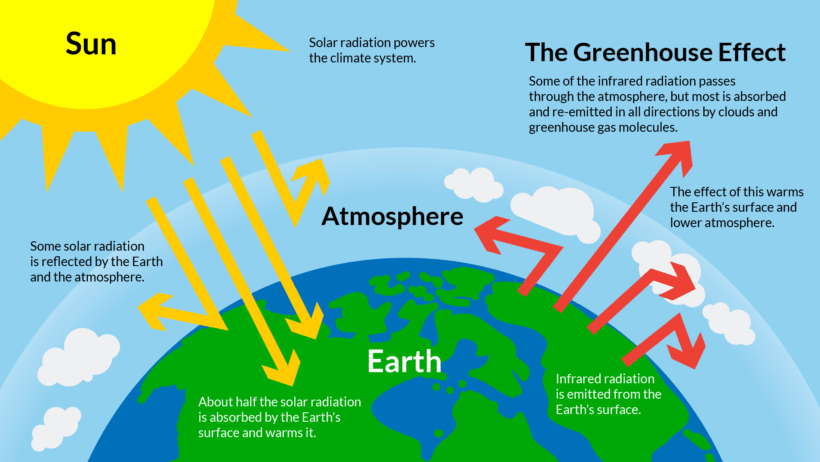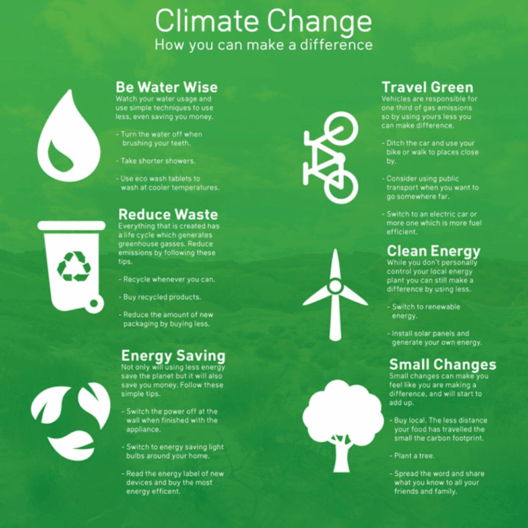The greenhouse effect is a term that resonates with many, particularly among those concerned with climate change and environmental sustainability. At the heart of this phenomenon lies the principles of heat transfer, which are crucial to understanding how energy from the sun influences our planet’s climate systems. This article aims to dissect the intricate relationship between the greenhouse effect and heat transfer, unveiling the mechanisms that contribute to this critical environmental process.
To begin, it is essential to grasp the fundamentals of heat transfer, which includes conduction, convection, and radiation. These three modes serve as the backbone of thermal energy movement, whether within the Earth’s atmosphere or its surface. They not only describe how energy is exchanged but also elucidate the underlying principles that govern temperature variations and climate dynamics.
Understanding heat transfer begins with defining radiation, which is the primary mechanism through which solar energy reaches the Earth. When sunlight enters the atmosphere, it is largely composed of visible light, ultraviolet, and infrared radiation. Unlike conduction and convection, which require a medium to transfer heat, radiation can occur through the vacuum of space. When solar radiation reaches the Earth’s surface, it is absorbed, warming the land and oceans.
This absorbed energy does not vanish; instead, the Earth re-emits it in the form of infrared radiation. However, not all of this outgoing radiation escapes freely into space. The interplay of various atmospheric gases, particularly greenhouse gases like carbon dioxide, methane, and water vapor, captures a significant portion of this thermal radiation, thereby promoting the greenhouse effect.
The Greenhouse Effect Mechanism: Trapping Heat in the Atmosphere
The greenhouse effect is a natural and essential process that helps maintain the Earth’s average temperature, making it hospitable for life. Without this effect, our planet would be inhospitably cold, with average temperatures around -18 degrees Celsius instead of the current +15 degrees Celsius.
So how exactly does this process unfold? After solar radiation warms the Earth’s surface, the emitted infrared radiation interacts with greenhouse gases in the atmosphere. These gases possess molecular structures that allow them to vibrate upon collision with infrared photons, absorbing this energy and re-emitting it in all directions, including back toward the surface. This phenomenon effectively creates a thermal barrier, retaining heat within the atmosphere and contributing to an overall warming effect.
While the greenhouse effect is essential for maintaining habitable conditions, human activities have dramatically intensified this natural process. Increased fossil fuel combustion and agricultural practices have augmented the concentration of greenhouse gases in the atmosphere, leading to what scientists refer to as enhanced greenhouse effect. This alteration exacerbates climate change, resulting in global warming trends that manifest in erratic weather patterns, rising sea levels, and other environmental changes.
Heat Transfer Dynamics: Exploring Conduction and Convection
While radiation plays a pivotal role in the greenhouse effect, conduction and convection are equally significant in the redistribution of heat within the Earth’s layered systems. Conduction occurs when heat transfers through direct contact between substances of different temperatures. For instance, when the Earth’s surface is heated by the sun, the soil and water bodies heat up, transferring energy to the adjacent air molecules through direct contact.
This process is particularly evident in urban environments, where asphalt and concrete absorb and retain heat. This phenomenon creates localized microclimates, often referred to as urban heat islands, which can lead to increased energy consumption and deteriorating air quality.
On the other hand, convection involves the movement of warmer air or water masses. As the Earth’s surface warms, the air above it rises, creating areas of lower pressure. Cooler, denser air then moves in to occupy this space, resulting in convective currents. This atmospheric circulation is pivotal in distributing heat, moisture, and other essential atmospheric elements around the globe, supporting diverse ecosystems and weather patterns.
The Synergy of Heat Transfer and Climate Change: A Call to Action
Understanding the intricate interplay between heat transfer and the greenhouse effect underscores the urgency of combating climate change. Human-induced alterations to our atmospheric composition have significant repercussions, influencing global temperature and weather stability. To mitigate these effects, it is paramount to adopt sustainable energy practices that foster a reduction in greenhouse gas emissions. Transitioning towards renewable energy sources and enhancing energy efficiency are critical measures that can alleviate the enhanced greenhouse effect.
Furthermore, individual actions, such as reducing fossil fuel consumption, supporting reforestation initiatives, and promoting responsible consumption, can collectively contribute to a broader solution. Advocacy and education are vital components in raising awareness and motivating both individuals and communities to participate in protecting the environment.
In conclusion, the relationship between the greenhouse effect and heat transfer elucidates a complex yet fundamental aspect of Earth’s climate system. This synergy elucidates how energy flows through our atmosphere, influencing weather patterns and resultant ecological conditions. Recognizing our role in this intricate balance is key to fostering a sustainable future. Each action taken today can have a profound impact on the environmental legacy we leave for future generations.








